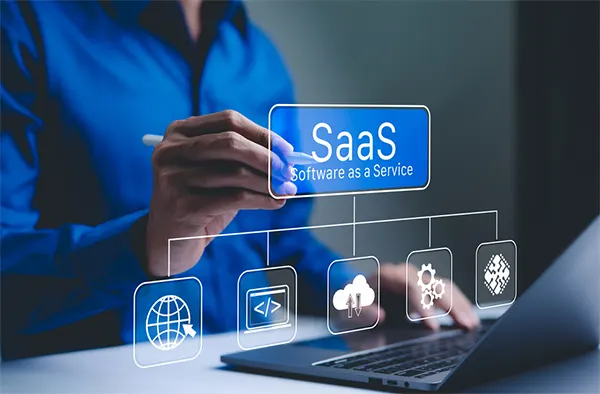Ans: SaaS performance metrics are key indicators that represent the operational and financial health of the company. The most commonly used SaaS KPIs are churn rate, monthly recurring revenue, and cost of acquiring a customer.
14 SaaS Performance Metrics to Track, Measure, and Scale Your Business
Building a business is not just about having the right team, a great product, or good investment prospects. In this world of SaaS, if you can not leverage data properly, chances are your business will not be able to reach its full potential.
Every founder trying to raise funds or start from scratch must understand SaaS metrics. These aren’t just numbers but the life force of every business. Want to know how to acquire customers who are actually buying your products, and how much revenue you are generating? Read this blog thoroughly.
We have covered all the essential SaaS Metrics, their impact, and how they can drive growth to another level here. So let’s get started!
What are SaaS Metrics?

Before we dive into the heavy terms, let’s first get hold of the basics.
SaaS metrics are key performance indicators of the health and growth of businesses across all industries. Whether you have a tech firm or a B2B SaaS product business, it can answer the most important business questions:
- Is the company growing sustainably?
- Are people perceiving the product the right way?
- Are customers sticking with the services in the long term?
- Is the company making cash or burning it?
Having a clear view of these insights not only helps to reframe strategies but also saves companies from burning through debt.
Why are SaaS Performance Metrics Important?

SaaS performance metrics are the driving force for every organization, and there’s no way one can afford to ignore them. Here’s why SaaS performance metrics are so important:
- Decisions Backed By Data: Building a company does not work on a guessing game. You need data and proof to back up your strategies, and SaaS marketing metrics help with just that.
- Presentable to Investors: Most investors in today’s time rely on SaaS benchmarks. In order to raise funds, these metrics show a complete picture to decide whether the business is worth investing in.
- Scalability: Every business wishes to scale, but analyzing the right time is what is necessary. SaaS marketing metrics pinpoint the opportunities and explain whether the business model is scalable or not.
- Retention and Growth: The weakness or loopholes in strategies can make a business pay big time. Therefore, SaaS data spots the weaknesses early stage to find the solutions and fix them.
Check Out: The Rule of 40 in SaaS: Meaning, Benefits, Limitations, and How It Helps Investors and Founders
Key SaaS Metrics You Must Know About
Whether you are launching a new product or scaling, there are a few essential SaaS metrics to grasp. Let’s dive deep into them:
1. Monthly Recurring Revenue (MRR)
As the name suggests, MRR gives a picture of how much revenue a business is generating each month. It helps to predict the outcome, which is quite helpful in taking the right steps ahead.
| Formula: MRR = Number of Customers × Average Revenue per Account (ARPA) |
Types of MRR:
New MRR: Income generated from new customers.
Expansion MRR: Income generated from upsells, cross-sells, and product upgrades.
Churned MRR: Revenue lost during the downgrades and service cancellations.
2. Annual Recurring Revenue (ARR)
This is revenue generated over 12 months. ARR gives a complete snapshot of the financials of the business. It is necessary data that can define the path of the company.
| Formula: ARR = Monthly Recurring Revenue × 12 |
3. Customer Acquisition Cost (CAC)
CAC is a metric that shows the total cost incurred in acquiring a new customer. It includes costs of marketing, outreach, sales, and other modes of promotion. It helps businesses to understand their marketing spend and make wise money decisions.
| Formula: CAC = Total Sales & Marketing Spend / Number of New Customers Acquired |
4. Customer Lifetime Value (CLTV or LTV)
Businesses try hard to turn first-time customers into loyal ones, and LTV is the ratio that tells a gross profit a business makes from a single customer based on their average time with the service. This data is crucial to understand how well the product fits the audience, does it meets customers’ needs, and the points to improve.
| Formula: CLTV = ARPA × Gross Margin × Customer Lifespan |
Check Out: Top ERP System Examples: Best Business Management Tools You Must Know About
5. LTV: CAC Ratio
These key e-commerce SaaS metrics explain how much revenue a company can potentially generate from a customer over their relationship and the cost of acquiring that customer. It represents the ultimate benchmark for sustainability in SaaS.
| Ideal Benchmark: LTV:CAC = 3:1 |
Which means,
A company must generate 3 times the money from the customer than what it spends. A lower ratio represents unsustainable growth.
6. Churn Rate
Knowing the number of customers who have unsubscribed from your services or no longer purchase your product is extremely crucial to evaluating the company’s status among its audience. Ideally, this rate of attrition should be lower than 2% monthly and 10% annually.
| Formula: Customer Churn Rate = (Customers Lost / Total Customers at Start of Period) × 100 |
Types of Churn Rate:
- Customer Churn: This data shows the actual number of customers lost in a particular period.
- Revenue Churn: This data illustrates how much annual and monthly revenue is lost.
7. Net Revenue Retention (NRR)
NRR is a crucial B2b SaaS metric that measures the percentage of recurring revenue that can be retained from the existing customers.
This includes all the aspects, like expansions and downgrades, that can hamper the quality of the customers and leads. If your NRR exceeds 100%, your current customers are increasing in a sustainable way.
| Formula: NRR = (Starting MRR + Expansion – Churn – Contractions) / Starting MRR × 100 |
8. Gross Margin
Gross margin is the percentage of revenue remaining with the company after deducting all the costs of delivering the product, hosting, customer support, and third-party subscriptions. This gives a clear view of how much money is left to invest in marketing and operations.
| Formula: Gross Margin (%) = [(Revenue – Cost of Goods Sold) / Revenue] × 100 |
9. Burn Rate
Burn rate is a growth metric that has the potential to change the entire trajectory of the business, either for good or bad. It is the speed at which a company is bleeding cash without generating revenue in return. The value helps startups to understand how long they can operate or sustain in the market without bringing in more money.
| Formula: Gross Burn Rate = Total Monthly Operating ExpensesNet Burn Rate = Total Monthly Operating Expenses – Monthly Revenue |
10. Runway
The accountants always keep an eye on the runway to evaluate the current burn status. It shows the exact data for how long a business can survive before running out of funds. Every founder must note this to make better financial strategies and understand when to cut costs or raise money.
| Formula: Runway (in months) = Cash Balance / Net Burn Rate |
11. Customer Monthly Growth Rate
This ratio represents the growth of the customer base month over month. Knowing the customer’s monthly growth rate is vital to understanding the product demand and marketing effectiveness.
| Formula: Customer Growth Rate (%) = [(Customers in the Current Month – Customers Last Month) / Customers Last Month] × 100 |
12. Quick Ratio (SaaS Growth Efficiency)
Quick ratio metrics, meaning in business, is the measure of how efficiently a business is growing. It includes various factors like gains from new subscribers, new additions to the product line, against the losses from the churn rate and burn rate. The higher the percentage, shows the company is moving in the right direction with sustainable growth.
| Formula: Quick Ratio = (New MRR + Expansion MRR) / (Churned MRR + Contraction MRR) |
13. ARPA (Average Revenue Per Account)
ARPA measures how much money you are generating from each customer’s account on a monthly basis. It helps to analyze the right pricing and marketing methods and shows the value of each customer. The rise of ARPA is a healthy sign, which means the customers a buying more products.
Knowing APRA can help:
- Segment the audience and customers by size.
- Introduce new SaaS pricing tiers.
- Check the opportunities with upsells or cross-sells.
| Formula: ARPA = Total MRR / Number of Active Customers |
14. Magic Number (Sales Efficiency)
The magic number is an essential metric for SaaS sales efficiency that indicates the amount of new recurring revenue generated for every dollar invested in sales and marketing during the prior quarter.
If the magic number is less than 1, it shows it’s the right time to scale as the company is growing. The number between 0.5 and 1 means you can optimize the current financial profile for growth in the next quarter.
| Formula: Magic Number = (New MRR This Quarter – New MRR Last Quarter) × 4 / Sales and Cost of Marketing Spend Last Quarter |
Final Words
Every type of business: early-stage, in scaling phase, every founder and growth marketer must aim to crack the numbers and not just refine the products. Success in SaaS is derived from key performance indicators, also known as software as a service metrics, that evaluate the growth, efficiency, and customer satisfaction.
We have explained the 14 most essential SaaS parameters and how they impact the business in this blog. So whether you want to scale smarter, sustain longer, or build a business from scratch, learn these KPIs by heart. Share the info with your friends and family to make them aware too!
Read Next: ERP vs CRM: Understand the Key Differences, Functions, Benefits, and More
Frequently Asked Questions
Q: What are SaaS Metrics?
Q: What is the 5-pillar SaaS metrics framework?
Ans: The five core pillars of SaaS metrics are: acquisition, activation, retention, revenue, and referral. This framework creates a complete customer journey and tracks data at each stage.
Q: What is the Rule of 40 in SaaS Metrics?
Ans: The Rule of 40 is a benchmark that tells a SaaS company’s growth rate and gross margin must exceed 40% to balance the profitability and expenditures on growth.
Q: What are the North Star metrics for SaaS?
Ans: The north star metrics for any SaaS firm are a) monthly recurring revenue, b) net revenue retention, and c) churn rate.
Q: What are the key metrics for B2b SaaS?
Ans: The key software as a service metrics for B2B are the cost of acquiring a customer, monthly generated revenue, churn rate, and magic number. These metrics help to measure profitability and growth efficiency based on every business model.
Sources

